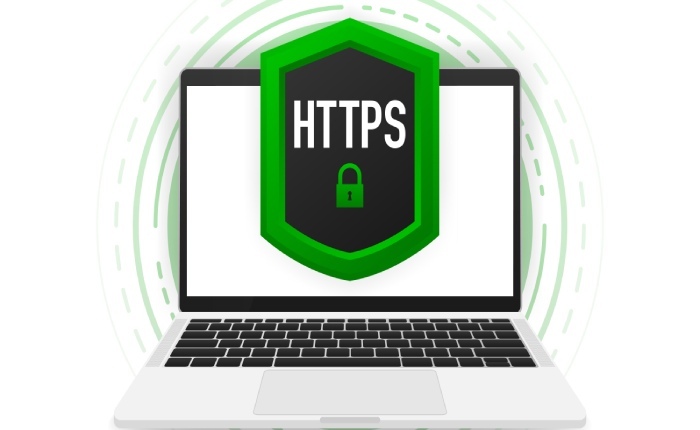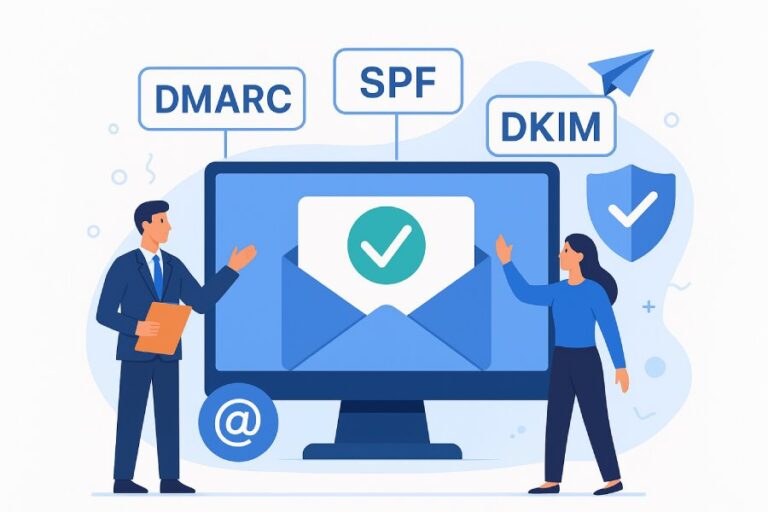Session Hijacking: Understanding Risks and Prevention Techniques
In the vast digital landscape we navigate daily, there’s a lurking menace that often goes unnoticed—session hijacking. Imagine casually logging into your favorite website only to find out that someone else has taken over your account without you even realizing it. That’s the reality of session hijacking, where attackers snatch away control from unsuspecting users, putting their information at serious risk.
This article dives deep into understanding the mechanics behind these attacks and emphasizes why it’s crucial to stay informed about how they happen and what we can do to prevent them. By unraveling the complexities of session hijacking, we aim to equip you with the knowledge needed to safeguard your online presence effectively. So, let’s explore this cybersecurity threat that no one should overlook!
Session hijacking is a cyber attack where an attacker steals a user’s session token, allowing them unauthorized access to sensitive accounts without needing passwords. This exploitation can compromise user security significantly, leading to data breaches and identity theft if proper prevention techniques, such as using HTTPS and secure session management practices, aren’t employed.
What is Session Hijacking?
At its core, session hijacking refers to a cyber attack during which an unauthorized user gains control of a legitimate user’s web session. This exploitation allows the attacker to impersonate the victim and access sensitive information, activities, and accounts without needing their password. It’s like gaining the keys to someone’s personal vault—one moment they’re secure, and the next their private world is exposed.
The process typically begins when a user authenticates with a server. Upon successful login, the server issues a unique session token, often stored as a cookie in the user’s browser. This token serves as a temporary identifier that keeps the user connected to their account while they navigate different pages on a website.

For example, consider logging into your bank’s website: once authenticated, you’re granted a session token that enables you to check balances or transfer funds seamlessly until you decide to log out.
The convenience of session tokens, however, comes with risks. If an attacker succeeds in stealing or intercepting this token, they can easily impersonate the legitimate user, opening doors to actions that range from transferring money to accessing sensitive personal data.
The methods employed by attackers vary from simple techniques like session fixation, where a predetermined session ID is set for the user before they log in, to more sophisticated strategies such as Cross-Site Scripting (XSS). In XSS attacks, malicious scripts are injected into web pages users visit, capturing session cookies silently while they interact with affected sites.
With just a few clicks, an unsuspecting user could unknowingly hand over control of their session to an attacker lurking in the shadows of cyberspace.
It’s also essential to recognize how widespread these types of attacks are and remain vigilant against them.
Alarmingly enough, reports indicate that around 30% of organizations have suffered from cases of session hijacking in recent years. The financial implications for businesses affected by such breaches can average about $3.86 million per incident—a staggering figure that illustrates the severity of this threat.
As we explore these vulnerabilities and the potential fallout from session hijacking attacks, it becomes clear that understanding how these exploits function is pivotal not only for security measures but also for fostering a safer online experience for everyone. A critical analysis of these mechanisms will enhance our ability to mitigate risks effectively.
Transitioning from understanding these vulnerabilities leads us naturally towards examining how exactly these exploitations manifest in real-world scenarios.
How Does Session Hijacking Work?
When you visit a website and log in, something fascinating happens: The server generates a unique session identifier, commonly referred to as a session token. This token acts like your digital ID, ensuring your ongoing engagement with the site remains secure. For most users, this token is stored within cookies on their browser. It retains information about your authenticated state, allowing you to browse without having to re-enter your credentials for every single action.

Step-by-Step Breakdown
1. Token Generation
The journey of session hijacking begins with token generation. After you authenticate yourself by entering credentials correctly—whether that’s a username and password—the server produces a session token specifically linked to your account. This process ensures that each user has a unique identifier for their interaction with the site, thus establishing a foundation to manage user sessions effectively.
Following its creation, this token is shared with the client—the web browser you use—to facilitate communication between you and the server.
2. Storing the Token
Once generated, the session token needs a place to reside securely. Your browser takes charge of storing this token, whether through a cookie, in the URL as part of the address bar, or embedded within HTTP headers. But here lies an inherent risk: if this token isn’t transmitted over secure channels (like HTTPS), it becomes vulnerable to interception.
A malicious actor looking to exploit this system now seeks ways to capture or predict that precious token.
3. Token Interception
In the realm of cyber threats, token interception comes into play as a crucial tactic in session hijacking. Attackers might engage in packet sniffing over unsecured networks, monitoring traffic to capture session tokens during their transmission. Other methods include using Cross-Site Scripting (XSS), where harmful scripts injected into web pages can steal cookies directly from unsuspecting users when they interact with crafted links or forms.
With various techniques at their disposal such as these, hackers gain leverage over users who unknowingly expose themselves through careless browsing habits.
Now armed with the stolen token, an attacker can easily impersonate the compromised user.
4. Session Impersonation
Upon successfully intercepting a valid session token, attackers bypass those walls we believe keep our information safe. They utilize that token to make requests as though they were you—it’s akin to possessing someone else’s house key. Within moments, they could access sensitive information or perform actions on your account without needing usernames or passwords.
Understanding these mechanisms highlights the necessity of securing our digital spaces against unauthorized access, which paves the way for a deeper examination of specific strategies used by cybercriminals to compromise sessions.
Techniques Used in Session Hijacking
One of the most straightforward yet dangerous techniques is token sniffing. This method involves intercepting the traffic flowing over networks, particularly unsecured ones like public Wi-Fi. Imagine sitting at a café, sipping your coffee while checking your emails. If you’re on an open network, a hacker could be lurking nearby, armed with tools that allow them to capture any session tokens being exchanged. These tokens are crucial because they keep you logged into your accounts without needing to re-enter your password constantly. The attacker essentially listens in, snatching these tokens right out of the air.

Moving on, we face another vulnerability: predictable tokens. Some web applications are notoriously insecure due to their reliance on algorithms that generate session tokens based on known patterns. For instance, if an attacker can understand how these tokens are created—say by analyzing predictable sequences or numeric patterns—they can forge their own valid token. This grants them unauthorized access without having to crack a password. Think of it as someone figuring out a combination lock’s sequence; once they have it, the door swings wide open.
But token-related vulnerabilities aren’t the only worries in this realm; other more invasive methods exist.
Another prevalent threat is the Man-in-the-Middle (MITM) attack. In MITM attacks, an intermediary (the hacker) inserts themselves between your device and the service you’re communicating with—such as your bank’s website—without either party knowing. They can relay and manipulate messages on the fly. Imagine chatting with a friend through a private messaging app only to find out later that someone was intercepting and altering your messages all along! The implications can be severe as personal data is vulnerable during such exchanges.
Lastly, there’s session fixation, where attackers set a user’s session ID to a known value during an interaction with a compromised site. When the user eventually logs in—unaware of the scheme—the attacker siphons off their authenticated session. It’s akin to leaving a spare key under your welcome mat: anyone who’s aware can simply pick it up and enter.
Understanding these techniques raises awareness of potential threats and emphasizes the importance of secure practices when browsing online. Users should be cautious about their internet activity and implement safeguards like using HTTPS and avoiding public Wi-Fi for sensitive transactions.
With this foundation laid, it’s essential to explore effective prevention methods that mitigate these risks and enhance online security measures.
Common Exploitation Methods
Among the popular methods are:
Session Sniffing
Imagine a coffee shop with free Wi-Fi. An attacker could use a packet sniffer tool to capture session tokens from unsuspecting users browsing the internet. This method operates under the radar, quietly monitoring the data traffic that flows through a network. Attackers take advantage of unsecured connections; those careless enough not to use a Virtual Private Network (VPN) or HTTPS are particularly at risk. With the number of people connecting to public networks daily, it’s clear why this straightforward yet dangerous method continues to be effective for skilled attackers.

Another method gaining traction alongside sniffing is Cross-Site Scripting, or XSS for short.
Cross-Site Scripting (XSS)
Through XSS attacks, hackers trick users into executing malicious scripts that run in their browsers, capturing tokens in the process. This often happens when users interact with deceptive links embedded in emails or on websites that seem trustworthy but are actually compromised. Clicking on one of these bad links could unknowingly give an attacker access to your session. Once the script runs, it can extract data, sometimes sending it straight to the hacker’s server without the user ever realizing what just occurred.
Compounding the issue further is a rather sophisticated approach known as Man-In-The-Browser (MITB).
Man-In-The-Browser (MITB)
This detrimental method involves malware specifically designed to manipulate browser behavior directly and intercept session tokens within a user’s device. Unlike other methods that exploit network vulnerabilities, MITB attacks occur from within, making them particularly insidious. The malicious software can alter what a user sees on their screen—effectively creating a false interface where session credentials can be harvested without alarming the victim. It serves as a stark reminder that even well-guarded network practices may fail if the endpoint—the user’s device—is compromised.
Understanding Various Techniques
Understanding these techniques helps illuminate why cybersecurity is essential for protecting sensitive online interactions. Each exploitation method uniquely contributes to the larger threat landscape; knowing how they operate allows both website developers and users to adopt better preventive measures.
| Attack Method | Description | Example |
| Session Sniffing | Capturing tokens over unsecured networks | Public Wi-Fi attacks |
| Predictable Tokens | Using predictable token patterns | Guessing sequential session IDs |
| XSS | Injecting malicious scripts to capture tokens | Clicking on crafted malicious links |
| MITB | Malware altering browser behavior to steal tokens | Trojan-infected browser |
By being aware of these common exploitation methods and understanding how they work, individuals become better equipped to safeguard against potential threats and help maintain the security of their online experiences.
With these explanations laid out, we now turn our attention to identifying when session hijacking occurs and exploring effective detection measures.
Detecting Session Hijacking
Detecting session hijacking may seem like a daunting task, but with the right strategies in place, it can be effectively managed and mitigated. One key to detection is being aware of anomalous activity. This refers to any unexpected or abnormal behavior associated with user accounts. For instance, if you notice logins occurring from multiple locations within a very short timeframe, it could be an indication that someone has accessed your account without your permission. Likewise, rapid transactions that seem out of character for a user can also signal foul play.

It’s advisable for users to regularly monitor their account activity and become familiar with typical login patterns. This familiarity helps in quickly spotting any unusual events that may arise, ensuring timely actions can be taken.
Another effective measure is implementing session alerts.
Setting up alerts for simultaneous logins from different devices or browsers is a proactive step towards detecting session hijacking attempts. When your account shows signs of access from multiple devices simultaneously, it’s a clear flag that something is amiss. By receiving real-time notifications when such anomalies occur, users can act swiftly—whether that means changing passwords or reporting suspicious activities to service providers.
Additionally, consider leveraging the power of multi-factor authentication (MFA) alongside these alerts as a way to tighten security protocols. MFA requires not just a password but also confirms the user’s identity through an additional verification step, adding another layer that makes unauthorized access much more difficult.
Having measures in place is invaluable; however, adjusting operational parameters can help further limit vulnerabilities.
Short Session Timeouts
Reducing session timeout duration can significantly curb the risk associated with stolen tokens. By configuring shorter session timeouts, websites reduce the window of opportunity for attackers seeking to exploit compromised tokens. For example, if a user is inactive for a predetermined amount of time—let’s say 10 minutes—their session would automatically expire. This ensures that even if an attacker manages to steal a session token during this period, its validity will disappear before they can make use of it.
Furthermore, implementing short session timeouts encourages users to log in more regularly and maintain better cybersecurity practices. The psychological effect of knowing they need to log back in frequently may lead users to create more complex passwords and take ownership of their account security.
Vigilance through monitoring anomalous activity and setting up timely alerts complements practical session management policies in strengthening defenses against potential threats.
Prevention Strategies
The first layer of defense against session hijacking begins with using HTTPS for all communications. Ensuring that every page on your site uses HTTPS encrypts the data flowing between your browser and the server, making it exceedingly challenging for attackers to intercept sensitive information during transmission. Think of it as a safe deposit box: only you and the bank have access to what’s inside, protecting your valuables from unwanted eyes.

In addition to HTTPS, securing your cookies is pivotal. By marking cookies with the “Secure” and “HttpOnly” attributes, you can prevent these vital pieces of data from being accessed via client-side scripts or over unencrypted channels. It’s akin to placing a lock on your cookie jar—only the designated guardians (in this case, the web server) should have access.
After implementing secure methods for communication and cookie management, it’s equally crucial to work on token management for further protection.
Regular token rotation is another key strategy. Frequently changing session tokens minimizes the window of opportunity for potential hijackers. Once again, think of this in terms of a key: if you change your door key every month, even if someone has a copy, their ability to enter becomes limited over time. If possible, include automatic logouts for inactive users; not only does this safeguard their session, but it significantly reduces the chances of unauthorized access.
Furthermore, implementing re-authentication measures for sensitive actions—such as altering account settings or making financial transactions—adds an extra layer of frustration for potential intruders seeking quick access.
- Implement HTTPS across your entire site.
- Use secure, HttpOnly cookies.
- Rotate session tokens regularly.
- Set appropriate session timeouts to limit inactivity.
- Monitor unusual activities and set up alert systems.
By combining these robust strategies into your security framework, you are establishing a strong defense against session hijacking efforts while also fostering safer online experiences for both yourself and your users. As we progress forward, let’s explore how to enhance the overall security practices tailored for web interactions.
Enhancing Web Security Practices
One effective way to build resilience against cyber threats like session hijacking is by conducting regular audits. These audits are not just about checking boxes; they serve as an opportunity to evaluate your online presence comprehensively. Imagine discovering outdated software or misconfigured settings that could leave doors wide open for attackers. By routinely assessing your systems, you’re performing a health check that can identify vulnerabilities before they escalate into major issues. This proactive step embodies prevention, a key principle in cybersecurity practices. Implementing SPF, DKIM, and DMARC alongside regular audits strengthens your email security posture by preventing domain spoofing and identifying vulnerabilities before they can be exploited by attackers.
As you embark on this journey of improvement, it’s paramount to remember the human element involved. Users are often the last line of defense against cyber attacks. Educating them on the significance of their actions—such as thinking twice before clicking on suspicious links—empowers them to take control of their online behavior. Simple tips shared during meetings can make all the difference: avoid public Wi-Fi for sensitive transactions, recognize phishing attempts, and regularly update passwords. Through ongoing education, users become vigilant guardians of their own digital safety.
Moving significantly beyond awareness, implementing Multi-Factor Authentication (MFA) transforms how we secure our accounts. MFA requires additional verification steps after entering standard credentials, adding layers of protection that are incredibly beneficial. This extra hurdle makes it exponentially more difficult for an attacker to compromise an account, even if they somehow acquire a user’s password or session token. For instance, imagine logging into your bank and being prompted for a temporary code sent to your mobile phone; this small inconvenience can effectively deter potential criminal activity.

Ultimately, building a holistic approach through regular audits, user education, and advanced authentication methods lays a robust foundation against session hijacking and similar cyber threats. Each practice interlocks with the others, reinforcing the overall security strategy and ensuring that vulnerabilities are not simply overlooked but proactively addressed.
For those interested in more comprehensive guides on enhancing your web security, our website is rich with resources designed just for you!
In conclusion, by prioritizing proactive measures and promoting user awareness, organizations can mitigate risks associated with session hijacking effectively and foster a safer digital environment.
What are the signs that a session has been hijacked?
Signs that a session has been hijacked include unexpected logouts, the presence of unfamiliar activities in account logs, or receiving notifications about password changes you didn’t initiate. Users may also notice unusual error messages or prompts for re-authentication. According to a study by Verizon, around 30% of data breaches involve session hijacking techniques, emphasizing the importance of recognizing these signs promptly to mitigate risks.
What are the common methods used in session hijacking attacks?
Common methods used in session hijacking attacks include cross-site scripting (XSS), where attackers inject malicious scripts into web pages to capture session tokens, and packet sniffing, where they intercept network traffic to seize unencrypted session data. Another prevalent technique is session fixation, wherein an attacker tricks a user into using a known session ID. According to recent cybersecurity reports, around 30% of web application vulnerabilities are attributed to improper session management practices, highlighting the critical need for robust security measures in preventing such attacks.
What steps should organizations take to mitigate the risk of session hijacking?
Organizations can mitigate the risk of session hijacking by implementing several key strategies: using HTTPS to secure communications, enabling HttpOnly and Secure flags on cookies, utilizing multi-factor authentication (MFA) to add an additional layer of security, and regularly monitoring and analyzing user sessions for unusual activity. According to a study by the Ponemon Institute, 70% of organizations experienced a web application attack in the past year, underlining the critical importance of these preventive measures to protect sensitive data and maintain user trust.

What are the potential consequences of a successful session hijacking attack?
A successful session hijacking attack can lead to unauthorized access to sensitive information, which may result in data breaches, financial losses, and identity theft. Such attacks exploit user sessions, allowing attackers to impersonate legitimate users and access their accounts without their knowledge. According to a study conducted by the Ponemon Institute, organizations can incur an average cost of $3.86 million per data breach, highlighting the significant financial impact that session hijacking can create for both individuals and businesses. Additionally, beyond monetary losses, there are reputational damages and potential legal ramifications that further emphasize the seriousness of this security threat.
How can users protect themselves from session hijacking?
Users can protect themselves from session hijacking by employing a combination of strong security practices such as using HTTPS to encrypt their connections, enabling two-factor authentication (2FA) for an added layer of security, and regularly updating their passwords. Additionally, staying vigilant about shared networks, especially public Wi-Fi, can mitigate risks; statistics indicate that 43% of cyber attacks target small businesses, highlighting the importance of every user being proactive about their online safety.







